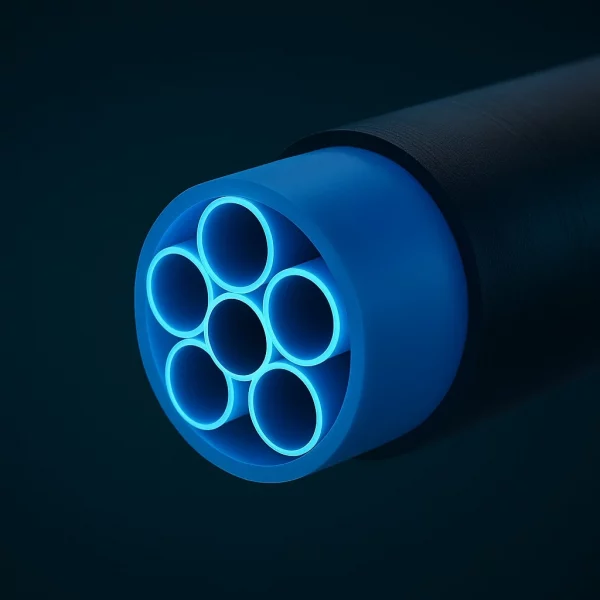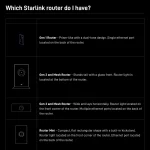Hollow Core Fibre Cables Step Closer to Commercialisation in the UK

Fibre optic network technology provider Relativity Networks has entered into a strategic partnership with UK-based Network Planning Solutions (NPS), an international provider of fibre installation and support services, in order to support commercial deployments of Hollow-Core Fibre (HCF) cables and infrastructure.
Conventional single mode optical fibre cables work by guiding laser light through solid glass (silica) cores, which need to be extremely transparent in order to avoid signal loss. But even the clearest of fibres can still suffer a slight loss over distance and researchers have thus long been refining a possible alternative for the future – HCF.
HCF cables have an air-filled central core (i.e. light travels faster through the air than glass), with an outer ring of glass to help guide the beam, which helps to resolve some of the aforementioned issues – improving latency, reducing signal loss and potentially also boosting data speeds a bit too. But refining this technology for commercial deployment has taken a bit of time.
Advertisement
The new partnership being announced above will see Relativity Networks’ patented HCF cable benefitting from having NPS as the inaugural member of their Trusted Installation Partner (TIP) program. Under this program, Relativity Networks closely collaborates with installation companies to train them in the specifics of deploying their HCF technology.
As part of the partnership, Relativity Networks and NPS have worked through hundreds of splices of the company’s fibre, applying the latest methods including rotational alignment and interferometer inspection of cleaves. These efforts are a critical aspect of commercialisation, demonstrating to customers how HCF can be deployed and seamlessly integrated into their existing infrastructure.
Daniel Preston, CEO of NPS, said:
“We are excited to bring our international expertise to Relativity Networks and its customers. By working together, we can meet the most demanding needs of digital infrastructure customers and help them realise the significant benefits of hollow-core fibre.”
Jason Eichenholz, CEO and Founder of Relativity Networks, said:
“Everyone in the industry is struggling to understand how to integrate something new into their ecosystem. There are many questions about HCF and how it connects to existing systems. We are addressing this by having a trusted installation partner like NPS, that has significant experience installing HCF across multiple installations and is an important part of Relativity’s ecosystem, which includes everything from fiber to cabling to connecterization to network design. NPS is our boots on the ground for our final phase of installation for our customers, offering a streamlined and reliable path as the industry moves toward a new era in optical communications.”
However, it’s important to caveat that HCF cables aren’t going to be used to replace all of today’s optical fibres – at least not for many decades (if ever). The reason for this is that, firstly, we aren’t even close to maximising the capability of existing solid core fibres. The improvements that HCF brings also lend itself more to ultra-low latency environments, such as connectivity for High Frequency Trading (HFT) over long distances or Data Centres etc.
Mark is a professional technology writer, IT consultant and computer engineer from Dorset (England), he also founded ISPreview in 1999 and enjoys analysing the latest telecoms and broadband developments. Find me on X (Twitter), Mastodon, Facebook, BlueSky, Threads.net and Linkedin.
« Altnet Broadband ISP Grain Expands UK Full Fibre Network in Grimsby






















































Could this technology be used to extend the range of PON technology in rural areas, to avoid the use of subtended headends? If so I wonder if it will increase viability of very rural areas!
A bit but not that much.
Range isn’t the issue most of the time it’s lack of fibre. Four fibres, two at a pinch, can provide resilient 100 Gbps to a remote headend with 16 PON ports in a 1.5 RU chassis. That’s 480 premises passed, while passive from an OLT using Openreach split ratios 4 fibres is 120 premises.
Obviously can get more range out of a lower split ratio as each split costs about 9 km of range but that means needing more fibre and ports.
The primary obstacles are cost and profitability.
HFC fibres are intended for specific use cases such as HPC, quantum compute projects, intra-DC low-latency systems etc. I do not know the respective costs, but the cost of deploying HFC would have to be comparable to existing fibre products for it to be even considered for deployment into extended networks. As it stands, most of the full-fibre network has been built and will have a lifetime of 40 years or more. Any increases in capacity will likely be addressed by changes to the transmission and insertion technologies.
Would be interesting to see what kind of latency reductions could we expect from using HCF in these scenarios? UK core (currently 20-30ms north to south), UK to US East (70ms), UK to US West (150ms), UK to SEA (250ms).
Getting global latency down is the next major hurdle, bandwidth has steadily improved, but latency has been stuck in the same place for decades.
About 30% but will be a while before it’s the standard. The existing deployments are between stock exchanges.
Exa Express, the lowest latency cable across the Atlantic has been around since 2015 and is still expensive enough no-one in their right mind would use it for residential customers unless they’ve spare capacity on it.
The latency is principally a result of the electronics that the traffic current flows through along the way. There is a lot of focus and some recent progress on using optical compute devices to virtually eliminate latency – at least wrt to currently accepted levels.
HFC will play a part, but initially it will almost certainly be aimed at specific use cases. Once the costs are known and are comparable to existing fibre product deployments, HFC might well be considered alongside existing fibre products for future replacement of life-expired fibre or capacity enhancements. I would also add that there may be special considerations to be taken into account for the deployment of HFC due to the nature of the technology and as suggested by the above announcement.
Over longer distances latency is mostly down to length of fibre. Cables hundreds of km long don’t require any amplification and into thousands before repeaters are required. Latency contribution from amplifiers is minimal, repeaters it’s higher but not the millisecond of round trip per hundred km from the fibre. Photonic switching is a thing and has been used for some time.
Across the distances mentioned bar the ‘UK core’ latency dominated by length. UK most of what we see isn’t really ‘core’ it’s more like a stopping service train than an express, picking up and dropping off traffic as it goes between towns and cities that are pretty close together in the grand scheme. Virgin Media’s network is a perfect example of this.
Routers and switches get a bad reputation for latency that’s historic. It’s very low on their ASICs now.
As we both alluded to HCF will likely find use only on the express routes companies pay a premium for so unlikely to see install outside of London bar connecting it to New York and EU cities until both the existing fibre needs replacing and it’s cheap enough.
-> Over longer distances latency is mostly down to length of fibre
That is not correct.
-> Cables hundreds of km long don’t require any amplification and into thousands before repeaters are required
That is not always correct either.
-> Photonic switching
I was not talking about Photonic switching; I was referring to Optical Compute, which is expected to help reduce processing times in endpoints along each path.
-> Routers and switches
They are still the main contributor in the case of Opticallinks.
-> HCF
The product has advantages in many use cases – especially outside of London in non-telecoms fields. The technology is still ready for production scaledeployment – as alluded to in several voices within the industry – besides the price-point factors.
Will it work outside of the laboratory?.The theory is fine but practicalities may prove difficult, is it compatible with the present infrastructure.Maybe not,there’s a learning curve to be overcome.installing cable in any environment is not without its challenges and takes time, it’s not something you learn overnight.I speak from experience,I first worked on optical fibre cable in the early 70’s, I’m 79 today.
It’s already out there in the field.
https://eunetworks.com/news/eunetworks-delivers-market-leading-ultra-low-latency-connectivity-to-euronext-with-its-longest-ever-hollowcore-fibre-deployment/
It’s for sale openly too: https://www.photonics-bretagne.com/en/anti-resonant-hollow-core-cable/